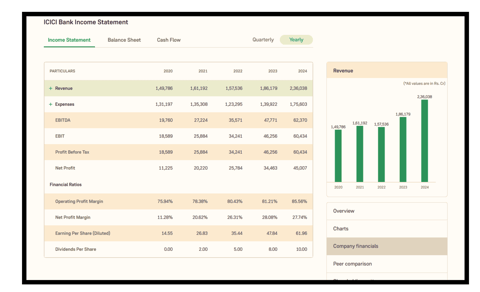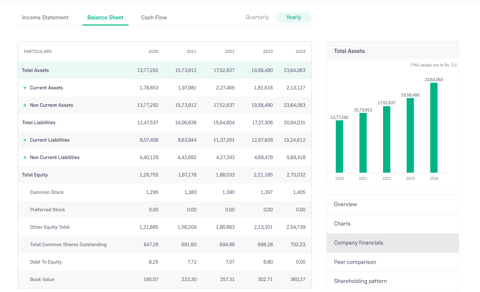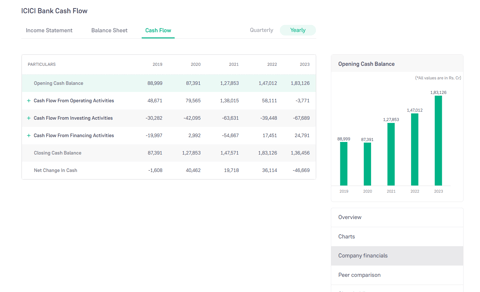Importance of Fundamental Analysis in Investing
Learn why understanding a company's intrinsic value through fundamental analysis is crucial for successful investing. Analyze financial ratios, revenue growth, earnings growth, cash flow, and industry trends to avoid losses and make informed decisions.
BEGINNERS GUIDE
5/8/20243 min read


Introduction
Fundamental analysis is a powerful tool for making informed investment decisions. By examining a company's financial health, economic position, and industry outlook, you can determine whether a stock is undervalued or overvalued. This knowledge empowers you to invest in companies with potential for long-term growth and avoid costly mistakes.
Understanding Fundamental Analysis
Fundamental analysis involves assessing a company's intrinsic value by analyzing its financial statements, industry trends, and competitive landscape. Key factors to consider include:
Financial Ratios: Analyze profitability ratios (e.g., profit margin, return on investment), liquidity ratios (e.g., current ratio, quick ratio), and solvency ratios (e.g., debt-to-equity ratio).
Revenue Growth: Evaluate the company's historical revenue growth and its potential for future growth.
Earnings Growth: Assess the company's earnings growth, including earnings per share (EPS) and profit margins.
Cash Flow: Analyze the company's cash flow from operations, investing activities, and financing activities.
Industry Analysis: Understand the industry in which the company operates, including its growth prospects, competitive landscape, and regulatory environment.
Why Fundamental Analysis Matters
Investing without fundamental analysis is like driving blindfolded. By understanding a company's underlying value, you can make more informed decisions and avoid investing in overvalued or troubled companies. This can help you protect your capital and increase your chances of long-term investment success.
A Hypothetical Scenario
Imagine you're presented with two investment opportunities: Company A and Company B. Both companies are seeking funding, but you only have enough capital for one. To make an informed decision, you would need to conduct a thorough fundamental analysis of both companies.
Company A: Has a strong track record of revenue and earnings growth, a solid balance sheet, and operates in a growing industry.
Company B: Has experienced declining sales, has a high debt-to-equity ratio, and operates in a mature, competitive industry.
Based on this analysis, it's likely that Company A would be a more attractive investment due to its stronger financial position and growth prospects.


1. We have to check whether a company is making a good amount of wealth by looking at revenue it should be always increasing. It shows that the company is making good progress and can generate a good amount. Also we have to keep a record of what are the expenses that the company is incurring while expanding
We should see that expansion is important for a company but not at the cost of company bleeding the money it means that revenue is increasing but expenses should be below the revenue


2.
· Assets are resources that have value and can be owned or controlled by an individual, business, or organization. These resources can be tangible, such as real estate, machinery, inventory, and cash, or intangible, such as patents, trademarks, copyrights, and goodwill.
· Liabilities are obligations or debts that an individual, business, or organization owes to others. These obligations can be financial, legal, or ethical and typically arise as a result of past transactions or events.


These both are very important for the
1. business as a company cannot run without both of them but we have to check what are the assets and liabilities of the company as it tells the overall strength of the company. So we should invest in a company where assets are more than liabilities.
2. Cash flow is a very important component of a business. People who do business know that cash is the lifeblood of the business so we have to keep a record of the business in which we are investing.
· Cash flow from operating activities is very important as it states what is the cash that is coming to the business with its operation so we should always consider companies that are with growing cash flow
·
· Closing cash flow shows what is the final cash that is left with the business at last after using all the money as it should always be increasing so it makes us clear that the company can generate good cash flow.
There are many other things that we should consider and there are various strategies also to get good returns from the market it's very simple you also can make great returns from the market in the long term by investing in a good company.
Thank you
Prabhav Maheshwari
EASE INVESTORS
© 2024. All rights reserved.
EASE INVESTOR
